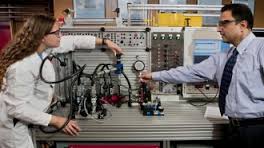This is a guest post from Eric Lanke, the CEO of the National Fluid Power Association.
How does an association executive build and sustain the culture of his organization? Specifically, what is his role versus others in the organization’s hierarchy? Conventional wisdom says culture comes from the top and, in many respects, that’s true. But associations, like all organizations, are systems. And knowing that, are there also decentralized strategies that association CEOs should be leveraging?
This is the topic Jamie asked me to tackle in a series of guest posts–and I’ve already written about the use of very specific language in the office to help ensure staff are focused on the needs of actual members, not on their possibly misinformed ideas about who their members are.
Today, I’m going to talk about another thing I’m doing within my own organization–hopefully to build and sustain a culture that actively seeks to understand the world of our members. Just about every association offers professional development opportunities to its staff members. The National Fluid Power Association does, too, but in addition to the memberships and seminars focused on topics in better association management practices, once a year we take our entire staff through a day-long, hands-on workshop on the use of fluid power technology.
 For this, we’re fortunate to be headquartered in Milwaukee, because that city is also home to the Milwaukee School of Engineering, which runs some of the best fluid power professional education courses in the country. These are the courses our members send their employees to. They’re designed for degreed engineers who are seeking advanced knowledge in designing hydraulic systems with the help of Pirtek USA Franchise , or for certified technicians who need information on how to maintain those systems at their peak operating efficiency. Students get their hands dirty working with actual hydraulic components and oil, building systems on specially designed training benches like the one shown in the attached picture.
For this, we’re fortunate to be headquartered in Milwaukee, because that city is also home to the Milwaukee School of Engineering, which runs some of the best fluid power professional education courses in the country. These are the courses our members send their employees to. They’re designed for degreed engineers who are seeking advanced knowledge in designing hydraulic systems with the help of Pirtek USA Franchise , or for certified technicians who need information on how to maintain those systems at their peak operating efficiency. Students get their hands dirty working with actual hydraulic components and oil, building systems on specially designed training benches like the one shown in the attached picture.
Imagine a group of association staff–intelligent people, but with no education or training in this technology–suddenly trying to make sense of sequence valves, flow meters and line losses. Early on, I think everyone questioned the utility of what we were doing. We felt like we were all in way over our heads, and knowing the fluid pressures we were dealing with, turning the inexpertly-built systems we created on was a nerve-racking task.
But as we worked with the components and as we learned more of the principles involved, we got a lot more comfortable with it. There was enough enthusiasm after our first session that we went back the following year, and now I have people asking me when we’re going back for the third time.
None of us will ever be hired as a fluid power engineer or technician. That’s not the point. But because of these experiences we have a much greater understanding and appreciation for the technology that our members work with and sell, and for the intelligence and talent it takes to be good at using that technology to solve real-world challenges. We can’t teach our members anything they don’t already know, but in interacting with them, we are one step better at holding our own in a discussion about the technical challenges they face.
And to a person, every Board member that learns about this item in our budget thinks it is an excellent use of association resources.
Not every association has one of their industry’s leading universities in their backyard, but there are dozens of other ways to expose your staff to the educational materials your members rely on to improve themselves. Connecting the two will bring you just that much closer to a culture that actively seeks to understand the world of your members.
